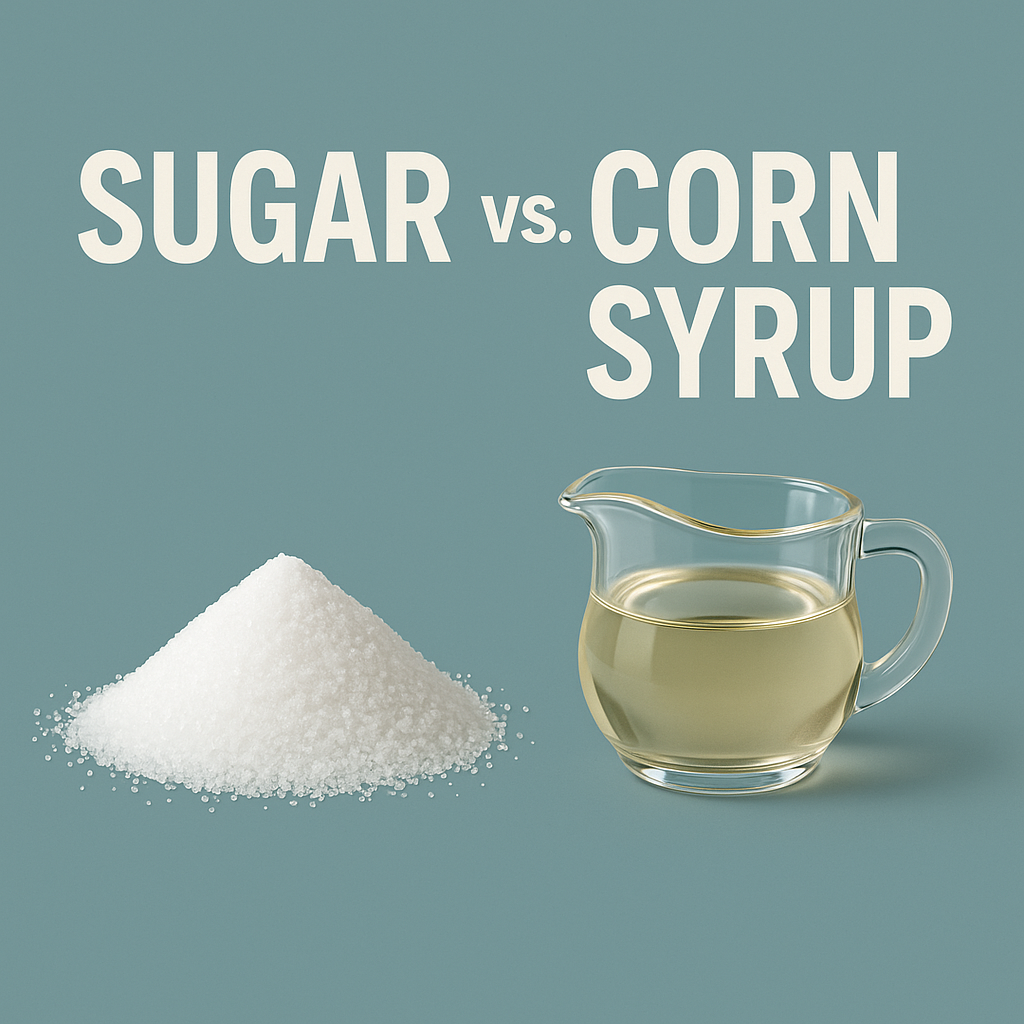
Coke, Cane Sugar, and Your Health: What You Need to Know
 Written by: Tracy Larson, MD
Written by: Tracy Larson, MD
Edited by: Thrive Carolinas
Coca-Cola and other sugary beverages are everywhere in the U.S. According to the CDC, about half of Americans consume at least one sugar-sweetened drink each day.
Traditionally, Coca-Cola in the U.S. has been made with high-fructose corn syrup (HFCS), while in many other countries it’s made with cane sugar. Soon, Coca-Cola will introduce a cane sugar–sweetened version in the U.S. While that may sound like a healthier choice, the reality is more complicated.
HFCS vs. Cane Sugar: What’s the Difference?
HFCS is a man-made sweetener derived from cornstarch. It shows up in a wide range of foods, soft drinks, sweetened fruit drinks, desserts, flavored yogurts, cereals, baked goods, and candy. Food manufacturers favor HFCS because it’s cheaper than cane sugar, widely available (thanks to government subsidies for corn), and gives products a longer shelf life.
Cane sugar and HFCS both provide roughly the same calories and have similar negative health effects. Some research suggests HFCS’s higher fructose content may increase the risk of fatty liver disease and insulin resistance more than cane sugar. But at the end of the day, both are linked to obesity, diabetes, and heart disease. The real issue is not which one you choose; it’s how much sugar you consume overall.
How Much Sugar Is in a Coke?
A 12-ounce can of Coke contains about 39 grams of sugar, or roughly 10 teaspoons. For comparison, the American Heart Association recommends no more than:
- 36 grams (9 teaspoons) of added sugar per day for men
- 25 grams (6 teaspoons) for women
That means one can of Coke exceeds the daily limit for men and nearly doubles it for women.
What Happens in Your Body?
Within 20 minutes of drinking a Coke, blood sugar spikes and insulin surges, pushing sugar into cells. The liver quickly begins converting excess sugar into fat. At the same time, your brain’s dopamine levels rise, activating its pleasure and reward centers in a way that resembles the effects of addictive substances. This “feel good” response can trigger cravings for another can.
Is Cane Sugar Any Better?
Switching from HFCS to cane sugar doesn’t make Coke a “healthy” choice. Both sweeteners are nutritionally empty and harmful in excess. While consumer demand may be pushing Coca-Cola toward cane sugar, the difference for your health is minimal.
Healthier Alternatives
If you’re craving something bubbly or flavorful, there are plenty of healthier swaps that cut out added sugars and artificial ingredients:
- Sparkling water with fresh fruit or herbs
- Kombucha (for probiotics)
- Unsweetened iced tea
- Fruit-infused water
- Coconut water
- Homemade lemonade
- Water with electrolyte packets
These choices offer hydration, flavor, and in some cases added benefits without the sugar overload.
Whether it’s made with cane sugar or HFCS, soda provides no real nutritional benefit. The best approach is moderation and whenever possible, swapping out soda for healthier, refreshing alternatives. Small, intentional changes like these can add up to a longer, healthier life.



